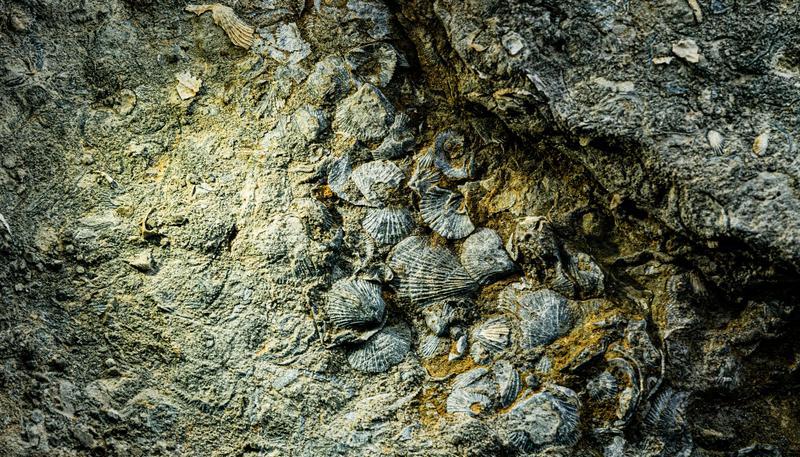Fossil discovery sheds light on ancient geography
2025-02-25 19:02:31
By Chen Zai. Hu Xingjun, Hao Mingxi also contributed to this article.
A recent discovery of numerous brachiopod fossils in Zigui County offers crucial physical evidence for research on the ancient geography and biological evolution of the Three Gorges region.
Preliminary analysis suggests that these fossils date back to the Ordovician period (488.3–443.7 million years ago).

Brachiopods are a group of marine invertebrates with bivalve shells. Their fossils play a crucial role in stratigraphic classification and comparative geological studies. The newly discovered fossils, abundant and well-preserved with clear shell ornamentation, are scattered across 100 square meters on Liushugou’s slopes in Chuanxindian Village, Jiuwanxi Town, Zigui County.
Due to its location in the mountainous region of western Hubei, Zigui County is rich in fossil resources and boasts a complex geological structure. Since 2014, the School of Earth Sciences at China University of Geosciences (Wuhan) has been conducting geological teaching and research in Zigui. Each year, nearly 1,800 faculty members and students engage in field studies, focusing on geochemistry, environmental geology, and related disciplines.
A recent discovery of numerous brachiopod fossils in Zigui County offers crucial physical evidence for research on the ancient geography and biological evolution of the Three Gorges region.
Preliminary analysis suggests that these fossils date back to the Ordovician period (488.3–443.7 million years ago).

Some brachiopod fossils discovered in Zigui are well-preserved with clear shell ornamentation.
Brachiopods are a group of marine invertebrates with bivalve shells. Their fossils play a crucial role in stratigraphic classification and comparative geological studies. The newly discovered fossils, abundant and well-preserved with clear shell ornamentation, are scattered across 100 square meters on Liushugou’s slopes in Chuanxindian Village, Jiuwanxi Town, Zigui County.
Due to its location in the mountainous region of western Hubei, Zigui County is rich in fossil resources and boasts a complex geological structure. Since 2014, the School of Earth Sciences at China University of Geosciences (Wuhan) has been conducting geological teaching and research in Zigui. Each year, nearly 1,800 faculty members and students engage in field studies, focusing on geochemistry, environmental geology, and related disciplines.






